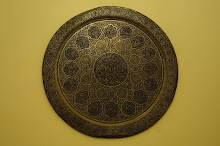 Review: The Travels of Ibn Battutah
Review: The Travels of Ibn BattutahEditted by Tim Mackintosh Smith
Macmillan UK, 400 pages.
The Travels of Ibn Battutah recounts a 14th century Moroccan’s wanderings through Europe, Asia and Africa on the eve of the Black Death. Translated in the 20th century by British scholars H.A.R. Gibb and Charles Beckingham, The Travels is a work which until recently was only found in university libraries or by way of the antiquarian book trade.
This abridgement of the Gibb-Beckingham translations by British travel-writer Tim Mackintosh-Smith is the latest refinement of a travel classic which may yet receive the wider audience it deserves.
Born in Tangier in 1304 and raised as an Islamic jurisprudent, Mohammed ibn Battutah left home at the age of 21 intent upon visitting Mecca. He appeared to have little more in mind for himself until meeting early in his travels with the Alexandrian sage, Burhan the Lame. In a pivotal encounter, Burhan prophesies Battutah’s travels to the Far East and requests that he convey his greetings to his spiritual brothers in India and China. “I was amazed at his prediction,” Battutah recalls, “and the idea of going to these countries having been cast into my mind, my wanderings never ceased until I had met these three that he named.”
Battutah's circuitous journey takes him across three continents - tripling the distance covered by his predecessor Marco Polo a generation earlier. After spending roughly ten years exploring the Middle East, Africa, and Central Asia, Battutah arrives at the wealthy Sultanate of Delhi in the mid-1330’s.
Here Battutah settles after finding employment as a magistrate and is appointed the emissary and head of a delegation in 1341 bound with gifts for the Emperor of China. But the journey is cut-short by a maritime disaster in which the greater part of the delegation and its gifts are lost. Rather than return to Delhi empty-handed, Battutah pushes eastward on his own, accepting work again as a magistrate on the Maldive Islands, before travelling to Ceylon, Burma, Sumatra, and finally to China. In what may be the climax of his journey, Battutah visits a venerable cave-mystic on the outskirts of Canton, who upon meeting him sniffs his hand and turns to his interpreter and says, “This man is from one end of the world, and we from the other.”
Returning home in 1353 by way of a Middle East smitten by bubonic plague, Battutah would dictate his journeys to “Ibn Juzayy” who completes Battutah’s memoires in 1356 and titles the book, A Gift to Those Who Contemplate the Wonders of Cities and Marvels of Travelling. It is the largest travel book ever written in terms of distances covered.
The immensity of The Travels is due to more than just the sheer scope of its geography. Ibn Battutah’s observations cover a wide range of subjects qualifying it as a work of scholarship as well as a travel journal. His Travels teem with vivid accounts of the ceremonies, benefactions and cruelties of the various royal courts that hosted him.
He catalogues the exploits of long-dead rulers, and proffers descriptions of never-before-seen flora and fauna. His unusual accounts range from those of dog-sledding in the semi-legendary “Land of Darkness” of Siberia, to an encounter in southeast Asia with the formidable princess-warrior Urduja, who would only marry the man who could defeat her in combat.
No less fascinating is Ibn Battutah himself, whose personality is marred by the struggle between the competing impulses towards worldliness and asceticism. Throughout his travels, Battutah seems to inhabit two planes of existence simultaneously: one peopled by yogis, faqirs and dervishes, the other by sultans, court officials and diplomats.
Seldom does Battutah pass-up an opportunity to visit the local sage, and on numerous occasions the author interrupts his official functions by disappearing on lengthy spiritual retreats, of which he gives little account. His love of women is the only thing that keeps rescuing him from the clutches of his self-imposed austerities. Time and again, Battutah takes up with an ever-changing entourage of female slaves and wives. This, however, does not prevent him, as magistrate, from trying to force the topless female inhabitants of the Maldive Islands to cover their breasts.
A longtime resident of Yemen and author of the much-acclaimed Travels with a Tangerine, Tim Mackintosh-Smith distills the essence of Battutah’s journeys from Gibb’s original five-volume text. He excludes some of the lengthier descriptions of the Ummayad Mosque in Damascus, and of the holy sites and rites of Mecca. In their place he retains the complete account of Battutah’s abduction in northern India by brigands in 1342, as well as the author’s tropical sojourn in the Maldives. Smith preserves all of Gibb’s immensely detailed and informative footnotes, which provide an invaluable context to the body of the work.
The Travels of Ibn Battutah offers a remarkable and unparalleled view of the eastern world as it was between the golden age of Islam and the European revival. It is also a colorful autobiography of a little-known caricature whose epitaph could easily derive from his own description of the saint and fellow-traveler, Abduallah al-Masri:
“He journeyed through the Earth, but he never went to China, nor the island of Ceylon, nor the Maghrib, nor al-Andalus, nor the Negrolands, so that I have outdid him by visiting these regions.”
All text in this post copyright John Zada and John Bell 2008













No comments:
Post a Comment